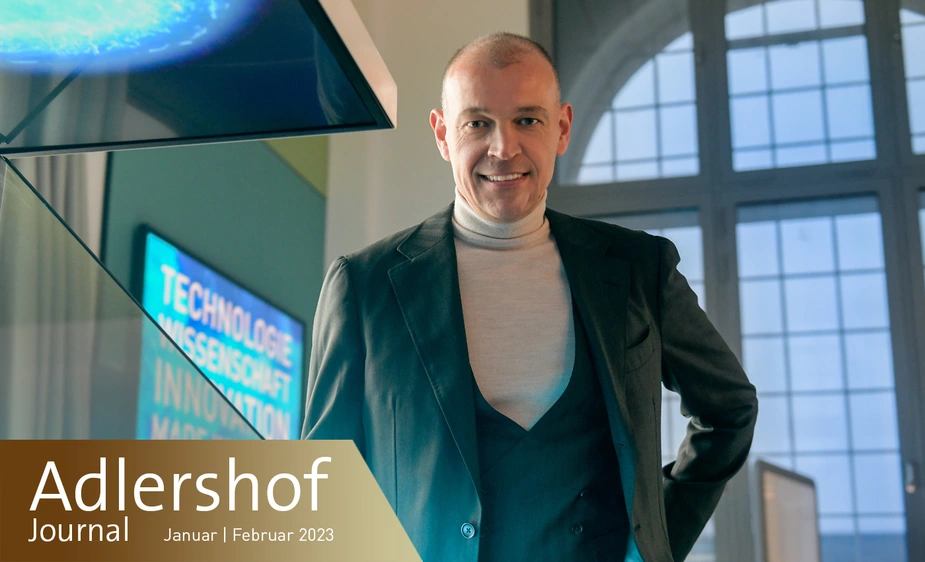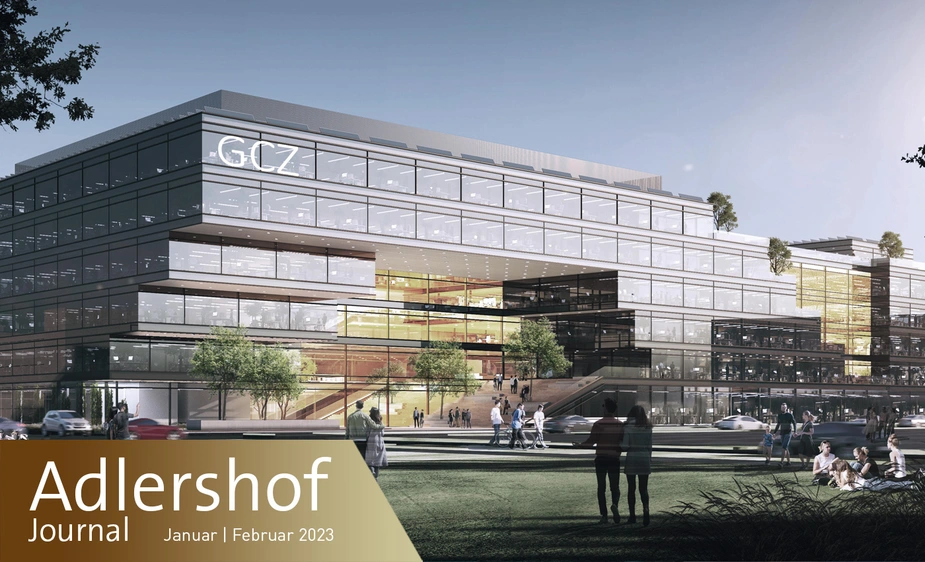Great challenges, great future
The Science City in Adlershof is booming. Space has become scarce. Has this success story been told? Far from it. Why? Because there are so many new things happening in Berlin’s southeast. The future is exciting.
Adlershof: a blueprint for technology parks across the world from America to China. A success story. Have we reached the end of it? A smile flickers across the lips of Roland Sillmann, the CEO of WISTA Management GmbH. “Has it been told? Certainly not. I would say: The first chapter has been closed.”
This first chapter tells the story of a breathtaking process of transformation after the fall of the Berlin Wall into an engine for technology and research in the city. Proof that Berlin is indeed capable of producing outstanding things. “We have shown that our concept is a good instrument for managing structural changes.” The approximately 25,000 people working in the Science and Technology Park are a testament to that.
The job of dealing with that structural change is done. And so it’s time to turn the page and start the second chapter. “It is no longer merely about creating jobs,” explains Sillmann, “we now also want to make a substantial contribution to solving the so-called Grand Challenges.” They include the great societal challenges of our time, including sustainability, demographic change, climate policy, the transition to clean energy (Energiewende), and health.
Today, it’s all about attracting the best talent from across the globe. This also means increasing the quality of life on the site as well as creating attractive jobs and co-working spaces. Since working remotely has been enjoying great popularity after the coronavirus pandemic, Sillmann sees a need for action here: “I remain convinced that face-to-face exchanges are extremely important because they stimulate creativity. We have to create spaces for this, spaces where people like to go to meet other people, exchange views and experiences, and develop ideas.” Together with a group of researchers, WISTA is currently investigating what these spaces should ideally look like.
Spaces like these will also be offered by the “Grand Challenges Centre”, or GCC for short. The GCC will be an interdisciplinary competence centre for founders, established entrepreneurs, and researchers to develop interdisciplinary solutions to pressing issues. The centre with a useable floor space of 15,000 square metres is planned directly on Rudower Chaussee – “the last choice object” on that street, Sillmann adds. Once the centre takes up operations there in a few years, it will be another magnet drawing top-tier international talent to Adlershof.
Moreover, WISTA is increasingly focusing on cooperation, also with Berlin-based companies. One reason is to reduce dependencies on foreign materials, including semiconductors or pharmaceutical products from Asia. Another important building block is cooperation with other places in Berlin that are generating future innovation, the so-called Zukunftsorte. They include Siemensstadt or the surroundings of FUBIC (Business and Innovation Center next to Freie Universität Berlin Campus), an innovation campus for technology-oriented start-ups and young companies from the areas of life sciences, healthcare, and computer science, which is currently being developed under the auspices of WISTA.
Innovation corridors along the railway lines to Berlin will play an important role in the future. Above all, the corridor from Adlershof to the Lusatia Science Park in Cottbus. To those remarking “that’s so far”, Sillmann replies by pointing to relativity. The two places are only an hour and a half apart. That is the same amount of time it takes to drive a car from Pankow to Adlershof through heavy traffic. “We need to stop thinking in the category of ‘commuting distance’ and start thinking about ‘commuting time’, how long does it take me to get to work,” says Sillmann, with emphasis. Only then will it be possible to conceive the two technology parks as one and to realise the enormous development potential.
However, the Lusatian counterpart to the Technology Park in Adlershof still has the above-mentioned structural change in front of it. However, it is already clear that renowned research institutes and companies will settle down there. Synergies guaranteed. In future, Berlin and Brandenburg must grow closer together and develop together as a metropolitan region. Adlershof can be an important driver of this, but the decisive role will be played by digitalisation. With a 5G campus network and communication technology such as LoRaWAN (Long Range Wide Area Network), the infrastructure needed to quickly develop new ideas is available on the site. “A singular network that exists here within a radius of 1,000 kilometres,” underscores Sillmann. “We want this digital infrastructure to create fresh impulses and inspire companies to concrete ideas, which, in turn, give rise to other projects and products. To do so, we are providing access to our a:head area at Forum Adlershof, a digital workshop to test use cases of all kinds.”
May the great challenges come this way. “Looking back on the development of the site in thirty years’ time,” Sillmann says, venturing a prediction, “people will see that minds from Adlershof have made significant contributions to tackling the ‘Grand Challenges’. The future will be much better than today’s pessimists are ready to admit.”
Chris Löwer for Adlershof Journal

